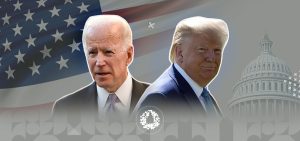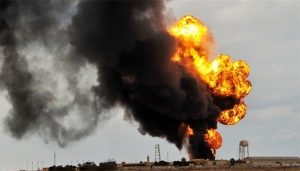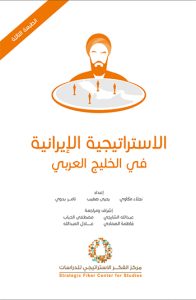Iran is looking forward to resuming negotiations with US President-elect Joe Biden on its nuclear program and other files. Similarly, it looks forward to the lifting of economic sanctions after facing four years of pressure during the term of US President Donald Trump, whilst Arab countries affected by Iran’s policies looked on, awaiting developments in US policy towards Iran. These are expected to be reflected on the nature of Iran’s presence in the Arab region, especially in western Asia.
This assessment of the situation deals with the nature of Iran’s presence in the Arab region and the relationship with its strategy. It also examines potential scenarios for Iran’s presence under Biden’s rule.
The nature of Iran’s presence in the Arab region
After more than a third of a century of theorising and taking action, Iran’s presence in some countries of the Arab region has evolved into one of a mixture of ideology, politics and military. Indeed, it has relied on two basic pillars: soft power and hard power. Soft power entailed working with its resources and tools: sectarian, media and educational, and cultural influence. It worked on attracting Arab students to study in Iran, and encouraged cultural centres of Iranian embassies, as well as their diplomatic missions, to attract personalities and spread the principles of the Khomeinist revolution, highlighting Iran as a state that supports the oppressed and is technologically advanced.
As for hard power, Iran’s direct military role / presence until 2003 was represented in Lebanon by Hezbollah, in Iraq by the Da’wa Party, and some Shiite factions in the Gulf and Yemen, where it carried out some bombings. Additionally, there are official cooperation relations between Iran and Syria.
Iran’s military presence expanded in some countries of the Arab region after the US occupation of Iraq in 2003; Israel’s withdrawal from Lebanon in 2006; and during the military confrontations between the Yemeni army and the Houthi militia since 2004. Iran also strengthened its military presence by utilising Bashar al-Assad regime’s need to suppress the Syrian revolution, and the spread of ISIS in Iraq and Syria, as well as the Houthi’s thirst for power in Yemen. In this regard, Iran not only sent military experts, but it also sent military teams and recruited Shiites from Pakistan, Afghanistan and elsewhere.
Determinants of the future of Iran’s presence in the Arab region
With the rapid changing developments taking place in Iran and the countries of the Arab world, and the wait for Joe Biden’s administration to assume power next January, the best approach to explore the future of Iran’s presence is to identify the most prominent determinants that may be ruling it.
Stability of Iran’s domestic environment
The Iranian regime’s domestic, political and economic stability is a major determinant of the regime’s stability and the future of Iran’s presence in the Arab region, especially since Iran’s economy suffers significantly from the pressures that have burdened the citizens and has been the cause of popular unrest more than once. The latter damaged the regime’s image and questioned the size of its popular support. On the other hand, the ongoing struggle for power between the wings of the regime and the extent to which it can reach constitutes an important influence on the stability of the regime and the presence of its forces outside Iran. The disparity over the priority and feasibility of military presence in the Arab region has widened, where the weaker party believes that the benefits of this presence has doubled the budget burdens and antagonised the region. Meanwhile, the second most influential party sees Iran’s presence in the Arab region falling in defence of the country’s national security, providing it with economic and geopolitical advantages that enable it to circumvent economic sanctions and strengthen its negotiating cards.
Iranian strategy in the Arab region
This is the second governing determinant of Iran’s presence, as Iran has demonstrated an ability to exert pressure in order to achieve its strategy. The Arab world is of special importance to Iran given its religious status among Muslims in general, the presence of some holy places for the Shiites, as well as the strategic location of the region, and its wealth. Furthermore, there is the historical dimension related to the military scramble between Iran and Arabs before and after Islam, as a divine religion condemned by Arabs and other nations, including the Persians.
Since the Iranian revolution of 2.11.1979 under the leadership of the first guide, Khomeini, the Iranian state has adopted a strategy of exporting the revolution – Wilayat al-Faqih – and it has expanded its sphere of influence. These objectives are proven in articles in the constitution, including Article 3, Paragraph 16: “The organisation of the nation’s foreign policy based on Islamic criteria, fraternal commitment to all Muslims, and unrestrained support for the impoverished people of the world.” Official institutions and entities were allocated to achieve these goals, on top of which is Iran’s Islamic Revolutionary Guard, specifically the Quds Force within it, which is concerned with implementing the military side outside Iran, in addition to institutions that are classified as soft forces. Iran has worked from an early stage to create space for the Arab region, especially on the Asian side, taking advantage of Shiite affiliation ties and claims of victimhood in some societies.
Iran is working to maintain its presence in the region and to ensure that the fate of its allies is linked to it through:
– Increasing the factors that affect the allies – Shiite factions and government institutions in Iraq, Syria, Lebanon and Yemen – and restructuring their components in a way that leads removing from making decisions those who have reservations about Iran’s influence and presence, guaranteeing loyalty to Iran. Furthermore, implicating Iran’s allies in conflicts and enmities with their societies leaves them needing to continue their alliance with Iran.
– Carrying out political and military agreements with Arab countries in which Iran’s allies have influence, such as Iraq, Syria and others, with the aim of granting Iran military presence legitimately, which guarantees its presence in those countries.
– Focusing on establishing relations with non-Shiite personalities and entities in an attempt to reduce the characteristic sectarian relations and the connection of Iran’s presence with the loyalty of some Arab Shiites only. This relies on cultural changes and purchasing loyalties and their entanglement in hostile acts that lead to their interests being linked to Iran.
– Strengthening Iran’s relationship with the Shiites of the Gulf states, as Iran is expected to try to disturb its security by inciting Shiites and raising the ceiling of their demands; and exploiting new economic policies based on taxes, as well as not achieving victory in the Saudi-led Arab coalition against the Houthis allied with Iran.
Meanwhile, Iran is trying to exploit the multiplicity of international actors and its focus is on those influencing them in the US decision. It is pushing the friends of the US, especially the Europeans, to return to the time before Trump imposed his measures, and to lift the sanctions, albeit gradually, which is consistent with the directions of Joe Biden’s administration; but the costs that Iran could offer vary.
The position of the Arab countries
The system of joint Arab action represented by the Arab League is currently going through a stage of stagnation, particularly in the absence of a leadership role defending the security of the Arab region and resisting Iran’s presence, which has come to influence the political and military decision in four Arab countries. The Arab conflicts and inter-Arab disputes have contributed to the expansion of Iran’s military presence in the region.
Meanwhile, some Arab regimes’ normalisation of their relationship with Israel weakens their relationship with their peoples, which gives Iran and its allies opportunities to promote their slogans and projects.
US policy towards Iran and the Arab region
It is expected that Joe Biden’s administration will rely on its relationship with Iran and its presence in the Arab region on two main means, namely compromise and consensus. The first are the tools that pressure Iran to comply with its demands; and the second is the Biden administration’s adoption of policies that express its desire to reach understandings. With it, these two tools will be used together in managing any crisis.
The other determinant of the expected US policy is its response to US public opinion and its positive response to it, as well as the desire of Biden, who has experience in his capacity as a former vice president and head of the Foreign Relations Committee, to adopt a policy of his administration. This policy would be different in its approach to that during the presidency of Donald Trump. Therefore, there is a great probability for major changes in US policy towards Iran, especially if Iran helps the US in reaching understandings.
Successive US administrations have adopted the principle of crisis management, rather than solving it, and the Biden administration’s political orientations towards Iran are still being shaped and affected by many factors and developments of events. Biden’s priorities lie in domestic files and in foreign policy, and the influences of those nominated to hold important positions in his administration. Biden’s administration policies will be characterised by features of the Democratic Party and its previous administrations, which includes cooperating with the Europeans, adopting a balance between the interests of its allies in the region and a diplomatic approach, and exercising pressure. It will not be an open cheque for Iran except within the limits of its vision to achieve US interests. These include:
– The necessity of balancing the powers in the region and curbing any Sunni Arab projects.
– Ensuring Israel’s security, and pushing the Arabs to stand with it against Iran, which has become a competitor with Israel for Arab hostility.
– Continuing sectarian conflicts and exhausting everyone.
For his part, Iranian President Hassan Rouhani on 28 November called on the next US administration to learn from the experience of the outgoing president’s administration in dealing with Iran, stressing that the sanctions policy will not achieve its goals.
Scenarios
In line with the ongoing developments in the geopolitical environment of the Arab region, and the domestic environment of the Iranian regime, and based on the aforementioned determinants, the expected scenarios range from the stability of Iran’s presence, its consolidation or its decline.
The first scenario: Consolidation of Iran’s presence
This scenario expects that the resumption of negotiations and understanding between Iran and Joe Biden’s administration and Europe, at least partially, will lead to the lifting of economic sanctions. This would ultimately be reflected in the increase of Iran’s expenditure on its civilian and military projects, in addition to it hailing the agreement as a victory that strengthens its presence – including militarily – in the Arab countries where it is currently present, namely Iraq, Syria, Lebanon, parts of Yemen, and some regions of the Gulf states. It would also lead to Iran expanding its cultural / sectarian and economic activities in other Arab countries.
Iran will try to influence the Biden administration and Western countries by exploiting international discontent with Donald Trump’s policies, which have caused tension in America’s relationship with many of its allies.
This scenario reinforces the continuation of Arab divisions, the weakening of joint Arab action represented by the Arab League, and Iran’s consideration that any decline in its presence in the countries in which it is located will transfer the battle to within its borders.
The second scenario: Decline in Iran’s presence
This scenario assumes that a set of factors and developments will lead to a decline in the degree of Iran’s presence in some Arab countries. The hypothesis of this scenario is based on the state of repeated protests inside Iran, and the increase in Israeli strikes on sites of the Iranian Revolutionary Guard in Syria with no response, in addition to competition between regional actors and Iran, especially Saudi Arabia, Turkey and Russia.
The third scenario: Stability in Iran’s presence
This scenario expects that Iran’s presence in some Arab countries will be characterised by the stability it has achieved during the past period, where Iran focuses on its domestic priorities and establishes its presence abroad without expanding or withdrawing.
Although this scenario is the most logical among the scenarios, what weakens it is the nature of the region, the multiplicity of regional and international actors, the weak economic stability of Iran’s internal environment and its impact on living standards, or the appetite of Iran’s conservative leaders, and their desire to expand into Arab countries.







